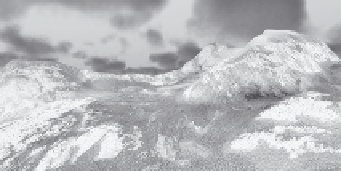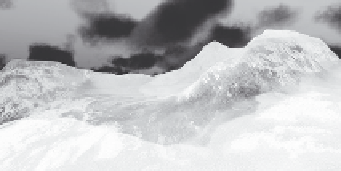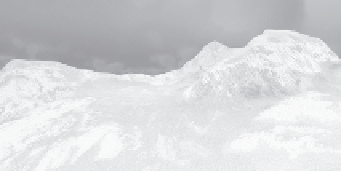Graphics Reference
In-Depth Information
Figure 3.16
Results of rendering an outdoor scene using a volume photon map; from the top, the sun
is positioned at noon, near sunset, and just after sunset. (Image rendered by Henrik Wann
Jensen.)
scattering. Dense smoke and clouds are examples of such media. Figure 3.16
shows the results of rendering an outdoor scene under a partly cloudy sky using
the volume photon mapping technique.
3.3.7 Rendering of Natural Phenomena
Tomoyuki Nishita and Heihachiro Nakamae published a series of papers in the
late 1980s and the early 1990s on the rendering of natural phenomena [Nishita
et al. 87, Nishita et al. 93, Nishita and Nakamae 94]. Much of the work was
concerned with scattering in the Earth's atmosphere. Their work was primarily
voxel based, in line with mainstream approaches to participating media at the
time. The ray marching technique became more actively used around the year
2000, driven in part by the rapid growth in hardware. Another change around that
time was a shift toward dynamic environments with participating media having
time-varying properties: in reality, clouds drift and smoke swirls. Demands for
such effects were increasing.










